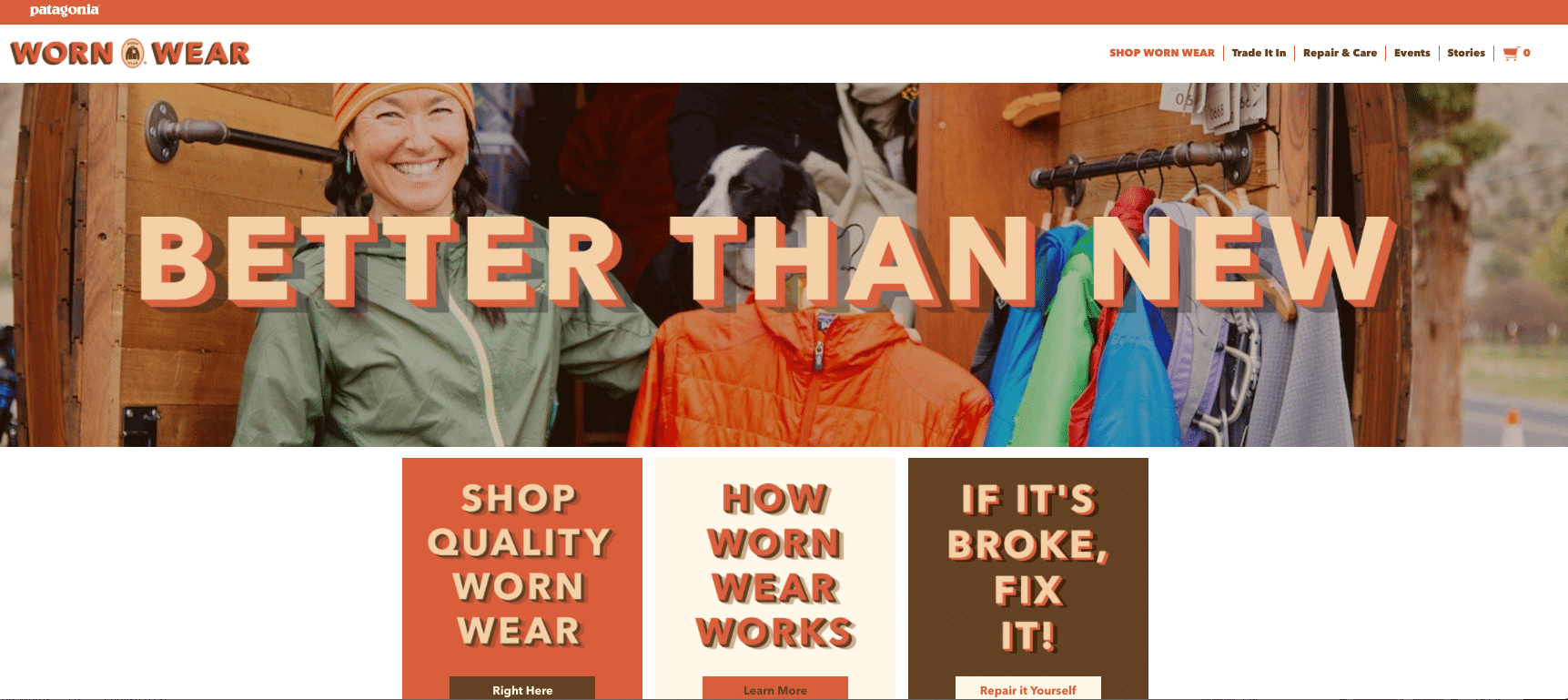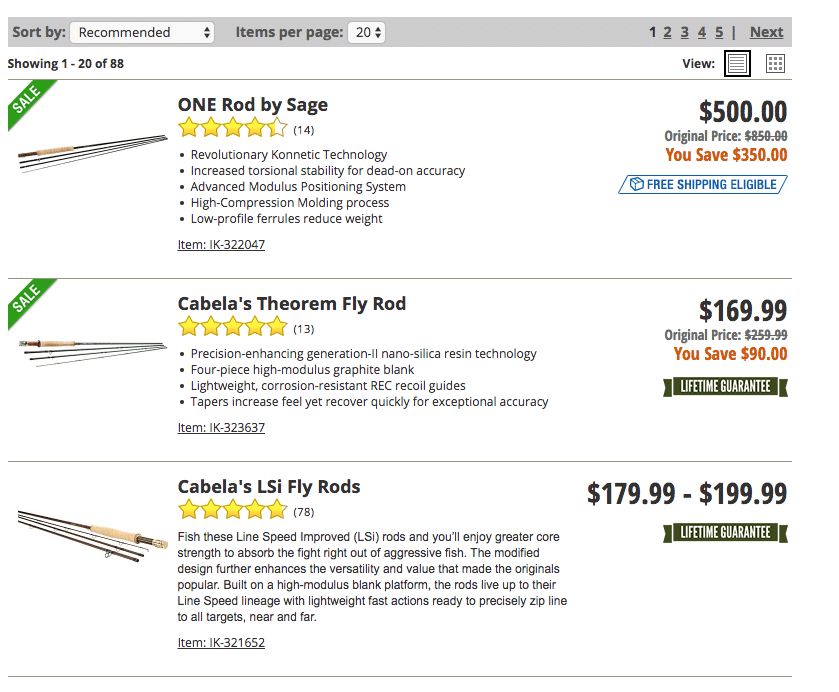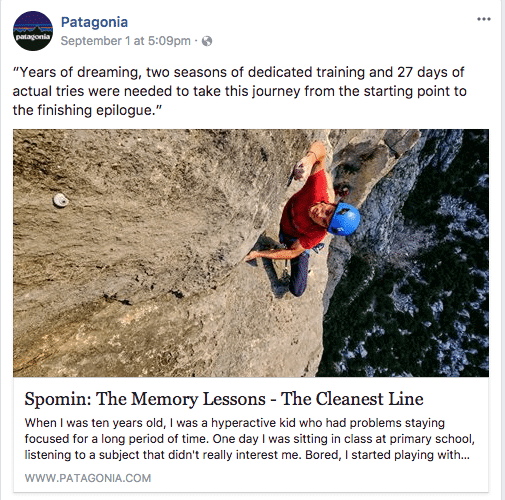The e-commerce world continues to get more and more competitive. To stay relevant and gain success there’s a lot to do to set yourself apart. Online retailers, especially those in the apparel industry are continually raising the bar on how to market themselves.
While we’ve covered the SEO that goes into e-commerce, and optimizing your categories and products is vital to search engines. E-commerce marketing strategies have to get to the human element of shopping online. As we marketers know getting a buyer to adopt a new brand, or a new way of buying is difficult.
So we’re going to take a look at a few companies who’ve made the most of the combination of retail and online retail over the last few years. Using these examples, we hope to show you how to make the most of your e-commerce marketing strategies in the future.
#1 – Tell Your Brand Story
E-commerce can feel like it’s devoid of personality. It’s browsing, learning, and making a transaction. While that may be the perception, it’s really not accurate for a lot of people. Many of us want to find the human element in our purchases. Few companies tie that humanity into their brand like Patagonia.
Patagonia is in a tight market with companies like Columbia, The North Face, and a host of other high-end outdoor companies. What they do differently is create a brand identity around environmentalism and the stories of the people that wear their gear.

They have created an entire area of their website around recycling, fixing, and reselling your worn gear to keep them going longer. This flies in the face of most retail stories. In world of planned obsolescence, and buying the newest technology every year, they teach you repair and recycling techniques. What’s the point of this?
Patagonia is about value. They charge the same $300-600 for a parka as other retailers, but they’re not preaching buying something new all the time. No, they want you to extend the life of it. Is that bad sales? No! A lot of people won’t it, they don’t know how to sew and they want the latest gear. But they get an emotional connection with the environmental brand identity. If you don’t tell a brand story, how is a person supposed to identify with your brand?
#2 – Create Creative Video
By the end of this decade nearly 80% of the bandwidth on the Internet will be video traffic. Now, that’s not to say that writing is dead, but it just takes a lot less bandwidth to handle written communication than it does for video. The point is that a lot of video is being created and shared around the world. What better way to communicate with your buyers than through video, but let’s not get stuck in sales mode every video.
Making creative video doesn’t have to be an expensive venture, just a creative one. For this example let’s look at Dick’s Sporting Goods. They saw a nearly 26% gain in e-commerce sales in 2016, and if you visit their YouTube Channel, there aren’t a lot of product videos.
No, they use video to educate proper techniques in using the products they sell, and human interest stories on a wide variety of topics. Their most viewed video (that isn’t one of their ads) is about youth football in the 5th ward of Houston, Texas. This video production may be out of the marketing reach of most small e-commerce businesses but that doesn’t mean you can’t tell a story.
If you’re a retailer there’s a human element to everything you sell. After all, you’re selling to humans aren’t you? Just like finding your brand’s story, using video to connect who you are, and what your business stands for with those that you seek to shop with you.
#3 – Get Reviews Everywhere
Amazon built their business on reviews. On page reviews are important for a lot of buyers who aren’t experts in what they’re buying. For this example let’s look at Cabela’s fly rods. If you are looking to get into fly fishing today, what are you going to do? Browse a website for rods and reels, and of course, look at reviews.

We’re almost trained at this point to look at the best reviewed products on a website as the guide for what to buy when we don’t know what we’re buying. But there’s another review area that most retailers don’t focus on but buyers do. That’s product reviews from professionals.
If I’m just getting into a sport such as fly fishing, I might not spend $500 on a high-end rod, but we’ll say, less than $100 is a budget I can invest. What’s my Google search look like? Probably something like, “Best fly fishing rod under $50.” Guess what, there’s a product reviewer for that.
If they’re testing 10 rods at an average of $45, do you think they went out and spent $450 to review it? No way! Cabela’s and other manufacturer/retailers sent them products to review and rank. If you’re an online retailer there’s probably a reviewer out there looking at similar products to what you sell and reviewing them.
Researching YouTubers and podcasters can get your goods in front of thousands of people without you having to buy ads. Be warned, if you have inferior products, the reviews of reputable outlets won’t be good and that’s not good for sales. But if you believe in how good what you sell is, why should you be concerned?
#4 – Understand Brand Loyalty
Brand loyalty is a double edged sword. Marketers talk about returning customers, upsells, cross-sells, and creating brand evangelists like it’s the easy part of retail. But if you’re treating e-commerce like it’s purely a transactional relationship, the loyalty starts to dissipate. Keeping someone coming back isn’t just about price, it goes back to what did you do to identify with your customer in the first place.
The good news is, if your competition is solely focused on price, chances are they didn’t create brand loyalty in the first place. This is an opportunity for you to find the thing that identifies with them and capitalize on it in the long-term.
In all of the aforementioned examples, each of these companies has done a great job creating brand loyalty in their respective fields. When I was shopping for new baseball cleats for my son, I went to Dick’s. When I need outdoor gear for hunting season, I go to Cabela’s. When I’m looking for hiking or camping apparel, I go to Patagonia.
I could go to Dicks for all three, I could go to Cabela’s for 2 out of the 3, the same goes with a Patagonia seller. But each has created a brand identity based on my activities, identified with me on the level I need at that moment that I wouldn’t think to shop at one for the other’s strength. As long as each of them continues to hit the mark that I need in that moment, I’ll continue to be brand loyal and an evangelist of their goods and service.
#5 – Use Social Like an Extension of Your Website
 Where do all these stories go? Where do we connect business and humanity? Social media of course. Putting all these stories on your website is only helpful to those who visit. Even if thousands of people visit you site each day, it doesn’t mean that they’re there to find that connection.
Where do all these stories go? Where do we connect business and humanity? Social media of course. Putting all these stories on your website is only helpful to those who visit. Even if thousands of people visit you site each day, it doesn’t mean that they’re there to find that connection.
No, we use social media to find meaningful connection. We don’t like a company on Facebook to get great deals. We like them or follow them because we identify with them. We like Patagonia for the stories of travelers and adventurers. We follow Cabela’s for hunting tips and tricks, and stories of big game hunts we may never have the fortune to go on. The reason the video about youth football is well watched is because millions of kids play inner city youth football and it’s a good story.
That story was shared by lots of people in order to get to 2.2 million views. Interacting with those folks who have an identity in what you sell can keep them coming back to your business. Finding what it is that identifies you with them, that’s the hard part.
Where Do You Go from Here?
Not everyone sells exciting products like climbing gear or sporting goods. Those products are much simpler to find great stories of human feats. But that shouldn’t stop you from finding out who you identify with, creating content that does that, and marketing to those individuals. The common thread between each of these 3 companies is simple: they aren’t telling you their story for you to get to know them, they’re telling it so it’s a part of you.
Walmart has the largest e-commerce/retail space footprint in the country. But they don’t have brand affection. No, that’s where other retailers come in to fill the gaps they leave behind. E-commerce marketing strategies aren’t just about price and speed of shipping. While they’re important they’re not everything to consumers. If you want to find those gaps that Amazon or Walmart miss, find the strategy that fits your customers and use the tools you have to let them know you’re one of them.





